Introduction:
Javascript is a very popular scripting language that allows you to implement complex programming functions or tasks (check this "What JavaScript is used for" guide for more insights). If you see the Internet world almost every website uses Javascript in order to perform a particular operation on a web page. New developers are struggling to learn or choose a correct Javascript framework as the world is already using a lot of JavaScript frameworks in websites.
The JavaScript frameworks are collections of JavaScript libraries, developers can use the pre-written and ready-to-use functions and patterns to build websites or web applications. In this article, we will see the top JavaScript frameworks.
List of Top 10 JavaScript Frameworks:
- Angular
- ReactJS
- Vue.Js
- Backbone.Js
- Ember.Js
- Node.js
- Mithril Js
- Aurelia Js
- Polymer Js
- Meteor Js
1. Angular
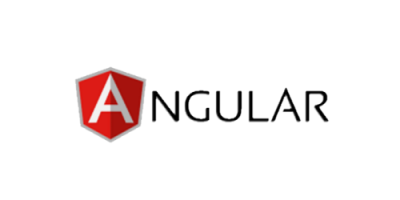
Angular is a powerful and comprehensive front-end framework developed and maintained by Google. Originally released in 2010 as AngularJS, it underwent a complete rewrite and became Angular (commonly referred to as Angular 2+) in 2016. Angular is designed to facilitate the development of dynamic, single-page web applications with a focus on modularity, reusability, and maintainability. It follows the Model-View-Controller (MVC) architectural pattern.
Key Features:
-
Component-Based Architecture: Angular embraces a component-based architecture, where the UI is broken down into modular components. Each component encapsulates its own logic, style, and template, promoting reusability and maintainability.
-
Two-Way Data Binding: Angular provides two-way data binding, allowing automatic synchronization between the model and the view. Changes in the UI instantly update the underlying data, and vice versa, streamlining the development of interactive and real-time applications.
-
Dependency Injection: Angular employs a robust dependency injection system, making it easy to manage and inject dependencies throughout the application. This promotes modularity, testability, and the development of loosely coupled components.
-
Angular CLI: Angular Command Line Interface (CLI) is a powerful tool that automates various development tasks, including project setup, code generation, testing, and deployment. It enforces best practices and accelerates the development process.
-
Directives: Angular uses directives to extend HTML with additional functionality. Directives like
ngIf,ngFor, andngStyleenhance the templating capabilities, enabling developers to create dynamic and responsive user interfaces. -
Services: Angular services are reusable components that provide shared functionality across different parts of an application. Services are often used for data fetching, business logic, and communication between components.
-
Angular Modules: Angular applications are organized into modules, which help in structuring and organizing code. Modules encapsulate related components, directives, pipes, and services, allowing for a scalable and maintainable application architecture.
-
RxJS Integration: Angular integrates with Reactive Extensions for JavaScript (RxJS), providing a powerful set of tools for handling asynchronous operations and events. This integration is particularly valuable for managing state and handling complex data flows.
2. ReactJs

React.js, often referred to as React, is a declarative and efficient JavaScript library for building user interfaces. Developed and maintained by Facebook, React was first released in 2013. It has since gained immense popularity for its simplicity, performance, and ability to create interactive and dynamic web applications. React follows a component-based architecture, encouraging the creation of reusable UI components.
Key Features:
-
Virtual DOM: React introduces the concept of a Virtual DOM, a lightweight representation of the actual DOM. By maintaining a virtual representation, React can efficiently update only the components that have changed, leading to improved performance in rendering and updates.
-
Component-Based Architecture: React promotes a component-based architecture, where UIs are broken down into modular and reusable components. Each component manages its own state and can be composed to build complex user interfaces. This approach enhances code organization, reusability, and maintainability.
-
JSX (JavaScript XML): React uses JSX, a syntax extension that allows mixing HTML-like tags with JavaScript. JSX simplifies the creation of React elements and components, making the code more readable and expressive. JSX is later transpiled into regular JavaScript by tools like Babel.
-
Unidirectional Data Flow: React enforces a unidirectional data flow, meaning data flows in a single direction—from parent components to child components. This ensures predictability and makes it easier to understand how data changes propagate through the application.
-
React Hooks: Introduced in React 16.8, hooks are functions that enable developers to use state and other React features in functional components. Hooks, such as
useStateanduseEffect, simplify the management of component state and side effects. -
Reconciliation: React's reconciliation algorithm efficiently updates the UI by determining the minimum number of changes needed to bring the virtual DOM in sync with the actual DOM. This contributes to React's performance and responsiveness.
-
React Router: While not part of the core library, React Router is a widely used library for adding navigation to React applications. It allows developers to create single-page applications with client-side routing and navigation.
React vs other similar technologies
- React uses a virtual DOM system instead of real DOM.
- It can be rendered on the server-side.
- It is light-weight.
- It uses the principle of unidirectional data flow.
React Advantages
- Fast, flexible, and light-weight.
- The code is easily understood because of its template orientation using JSX.
- It can be used with other technologies like Angular, Django, etc. It is the V in the MVC model.
- It has server-side rendering at its core.
3. Vue.Js
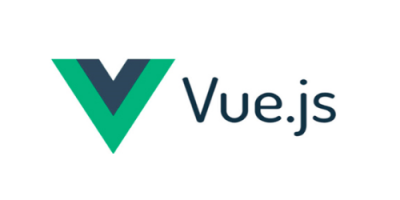
Vue.js is a progressive JavaScript framework designed for building user interfaces, ranging from simple view layers to complex single-page applications. Created by Evan You and first released in 2014, Vue.js has gained widespread popularity for its simplicity, flexibility, and incremental adoption. Vue.js is often described as a progressive framework because developers can integrate it into existing projects gradually, and it scales seamlessly to handle more complex applications.
Key Features:
-
Declarative Rendering: Vue.js utilizes a declarative approach to building user interfaces. Developers describe the desired end state of the UI, and Vue.js takes care of efficiently updating the DOM to match that state.
-
Component-Based Architecture: Vue.js is centered around the concept of components. Components encapsulate the structure, behavior, and style of a part of the UI. This promotes reusability, maintainability, and a clear separation of concerns.
-
Reactive Data Binding: Vue.js employs a reactive data binding system. When the data changes, the UI updates automatically, and vice versa. This bidirectional data binding simplifies the process of building dynamic and responsive applications.
-
Directives: Vue.js includes directives, special tokens in the markup, to add functionality to HTML elements. Directives like
v-if,v-for, andv-bindenhance the templating capabilities, making it easy to conditionally render elements, iterate over lists, and bind attributes. -
Vue Router: Vue Router is the official routing library for Vue.js, allowing developers to create single-page applications with client-side navigation. It provides a powerful and flexible routing system to manage views and navigate between components.
-
Vuex: Vuex is the state management library for Vue.js applications. It enables developers to manage the state of the application in a predictable way, especially in large and complex applications with multiple components.
-
Vue CLI: Vue CLI (Command Line Interface) is a standard tooling for Vue.js development. It simplifies the setup of new projects, handles development and production builds, and offers a plugin system for extending functionality.
4. Backbone.js
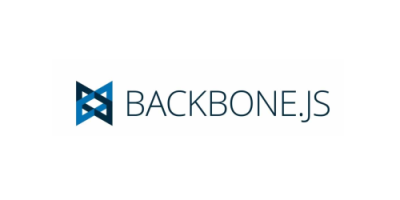
Backbone.js is a lightweight JavaScript framework designed to provide structure to web applications by offering key components like models, views, collections, and routers. Released in 2010, Backbone.js is known for its simplicity and flexibility, allowing developers to choose other libraries and tools to complement their application development. It follows the Model-View-Presenter (MVP) design pattern, providing a minimal set of functionality to structure client-side code effectively.
Key Features:
-
Modularity: Backbone.js promotes a modular approach to building web applications. It doesn't impose a strict structure, allowing developers to choose libraries and tools that best suit their needs for templating, data binding, and other functionalities.
-
Models and Collections: Backbone.js introduces the concept of models for representing data and collections for handling groups of models. Models can be synchronized with a server, and collections provide a convenient way to work with sets of data.
-
Views: Views in Backbone.js are responsible for rendering UI elements based on models and handling user interactions. They can be associated with a specific model or collection, facilitating the automatic updating of the UI when the underlying data changes.
-
Routers: Backbone.js includes a router component that enables the creation of navigable, bookmarkable URLs in a single-page application. Routers define routes and associated actions to be triggered when a specific URL is navigated to.
-
Events: Backbone.js relies heavily on an event-driven paradigm. Models, views, and collections can trigger and listen to events, providing a simple and decoupled way for components to communicate with each other.
5. Ember.js

Ember.js is a JavaScript framework designed for building ambitious web applications with a focus on productivity and convention over configuration. Initially released in 2011, Ember.js provides a set of tools and conventions to help developers create scalable, maintainable, and feature-rich applications. It follows the Model-View-Controller (MVC) architectural pattern and emphasizes the use of strong conventions to reduce boilerplate code.
Key Features:
-
Convention over Configuration: Ember.js follows a "convention over configuration" philosophy, providing a set of default conventions that simplify development. This approach reduces the need for explicit configuration, making it easier for developers to understand and navigate codebases.
-
Handlebars Templating: Ember.js uses the Handlebars templating engine to create dynamic and reusable HTML templates. Handlebars allows developers to write templates with minimal logic, enhancing code readability and maintainability.
-
Ember CLI: Ember CLI (Command Line Interface) is a powerful tool for managing Ember.js projects. It simplifies tasks such as project scaffolding, building, testing, and deployment. Ember CLI enforces best practices and conventions, promoting a consistent development workflow.
-
Ember Data: Ember Data is a library integrated into Ember.js for managing models and their relationships. It provides a convenient abstraction for working with data, including features like data adapters and serializers to communicate with various backends.
-
Routing: Ember.js has a powerful routing system that simplifies the creation of complex, multi-page applications. Developers can define routes and their corresponding controllers and views, allowing for a structured and organized application flow.
-
Computed Properties: Ember.js introduces the concept of computed properties, which automatically update when their dependent properties change. This enables developers to create dynamic and responsive user interfaces without manually managing data updates.
6. Node.js

Node.js, a cross-platform JavaScript runtime, has transformed the landscape of server-side development. Initially released in 2009 by Ryan Dahl, Node.js allows developers to run JavaScript code outside of a browser, making it an integral part of building scalable and high-performance server applications. This technology has gained widespread adoption due to its non-blocking, event-driven architecture and the vast ecosystem of packages provided by npm (Node Package Manager).
Key Features:
-
Event-Driven and Asynchronous: Node.js operates on a single-threaded event loop, enabling non-blocking I/O operations. This asynchronous nature enhances the efficiency of handling concurrent requests, making it ideal for applications requiring real-time data updates.
-
Cross-Platform: Node.js is designed to work seamlessly across various operating systems, including Windows, macOS, and Linux. This cross-platform compatibility simplifies the development process and allows for code reuse.
-
NPM Ecosystem: Node Package Manager (NPM) is a massive repository of reusable code modules, fostering collaboration and accelerating development. Developers can easily integrate third-party packages to extend the functionality of their applications.
-
Scalability: Node.js excels in building scalable applications, thanks to its event-driven architecture. It efficiently handles a large number of concurrent connections, making it suitable for applications with a high volume of users, such as chat applications and online gaming platforms.
-
Community Support: The Node.js community is vibrant and active. Developers benefit from a wealth of resources, including documentation, tutorials, and forums. This community-driven approach ensures continuous improvement and innovation within the Node.js ecosystem.
7. Mithril Js
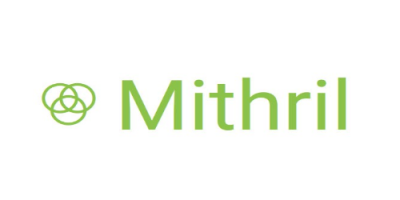
Introduction: Mithril.js is a concise and powerful JavaScript framework designed for developing Single Page Applications (SPAs). Released in 2014 by Leo Horie, Mithril.js prioritizes simplicity, performance, and a small footprint, making it an attractive choice for developers seeking an efficient and elegant solution for modern web development.
Key Features:
-
Lightweight and Fast: Mithril.js is known for its minimalistic size (around 8 KB gzipped) while delivering exceptional performance. This small footprint is advantageous for quick page loads and improved user experience, especially in scenarios where bandwidth is a concern.
-
Virtual DOM: Similar to other modern JavaScript frameworks, Mithril.js employs a Virtual DOM to efficiently update the actual DOM. This approach reduces the number of direct manipulations to the DOM, resulting in faster rendering and a smoother user interface.
-
Routing: Mithril.js includes a simple and effective routing system. Developers can easily define routes and associated components, enabling the creation of SPAs with smooth navigation and deep linking capabilities.
-
Reactive Components: Mithril.js embraces a reactive paradigm, where components automatically update in response to changes in underlying data. This reactive nature simplifies state management and enhances the overall maintainability of the application.
-
Modular Architecture: The framework encourages a modular and organized code structure. Components can be developed independently and seamlessly integrated into the application, promoting code reusability and maintainability.
-
Templating Engine: Mithril.js features a built-in templating engine that allows developers to create dynamic views with ease. The syntax is clean and intuitive, facilitating the creation of complex UIs while maintaining a declarative and readable format.
8. Aurelia

Aurelia is a feature-rich and forward-looking JavaScript framework designed for building modern web applications. Created by Rob Eisenberg and released in 2015, Aurelia stands out for its extensibility, modular architecture, and emphasis on developer-friendly conventions. With a commitment to staying up-to-date with the latest web standards, Aurelia provides a comprehensive solution for developers seeking a powerful framework for creating dynamic and scalable applications.
Key Features:
-
Convention over Configuration: Aurelia follows the principle of convention over configuration, reducing the need for explicit configuration files. This approach simplifies development by establishing sensible defaults, allowing developers to focus more on building features rather than spending time on boilerplate code.
-
Two-Way Data Binding: Aurelia supports two-way data binding, enabling seamless synchronization between the model and the view. This bidirectional communication simplifies the development of interactive user interfaces and enhances the responsiveness of applications.
-
Dependency Injection: The framework incorporates a robust dependency injection system, facilitating the management and injection of dependencies throughout the application. This promotes a modular and maintainable code structure, making it easier to manage components and services.
-
Modular Architecture: Aurelia's modular architecture encourages the organization of code into reusable and independently maintainable modules. Developers can compose applications by combining these modules, fostering code reuse and scalability.
-
Dynamic Routing: Aurelia includes a powerful and flexible routing system for managing navigation within applications. Developers can define routes easily, and the framework seamlessly handles navigation and view rendering based on the specified routes.
-
Extensibility: Aurelia is highly extensible, allowing developers to integrate third-party libraries and tools seamlessly. This extensibility ensures that developers can adapt the framework to suit the specific needs of their projects.
9. Polymer
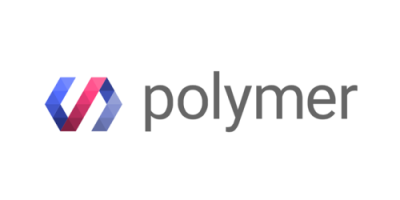
Polymer is an open-source JavaScript library developed by Google that simplifies the creation of web components for building interactive and reusable elements on the web. Released in 2013, Polymer focuses on the concept of web components, providing a set of tools and conventions to streamline the development of component-based user interfaces. With Polymer, developers can create encapsulated, reusable components that enhance code maintainability and enable modular design.
Key Features:
-
Web Components Standard: Polymer is centered around the Web Components standard, a set of browser APIs that allow developers to create custom, reusable HTML elements. This standard includes Shadow DOM for encapsulation, HTML Templates for defining markup, Custom Elements for creating new HTML elements, and HTML Imports for modularizing code.
-
Declarative Syntax: Polymer emphasizes a declarative syntax that simplifies the creation and usage of custom elements. Developers can define components using a concise syntax, making it easy to read and maintain code.
-
Data Binding: Polymer supports two-way data binding, enabling seamless synchronization between the model and the view. This bidirectional data flow simplifies the development of dynamic and interactive user interfaces.
-
Shadow DOM Encapsulation: Polymer leverages Shadow DOM to encapsulate the styling and behavior of components. This encapsulation ensures that styles and scripts within a component do not interfere with the styles and scripts of the surrounding page, promoting a clean and modular architecture.
-
Reusability and Composability: With Polymer, developers can create modular and reusable components. These components can be easily shared and composed to build complex user interfaces, fostering code reuse and maintainability.
10. Meteor
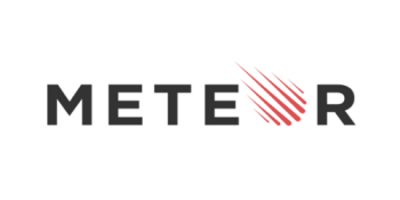
Meteor is a full-stack JavaScript framework that simplifies the process of building modern web and mobile applications. Introduced in 2012, Meteor enables developers to create real-time, responsive applications with a single codebase for both the client and the server. With built-in features for data synchronization, hot code reloading, and a rich package ecosystem, Meteor provides a seamless and efficient development experience.
Key Features:
-
Isomorphic JavaScript: Meteor allows developers to write isomorphic JavaScript, meaning the same code can run on both the client and the server. This shared codebase simplifies development, promotes code reuse, and ensures consistent behavior across different environments.
-
Data on the Wire: Meteor follows the "Data on the Wire" principle, where the server sends data, not HTML, to the client. This approach minimizes the amount of data transferred over the network, improving application performance and responsiveness.
-
Real-Time Data Synchronization: One of Meteor's standout features is its built-in support for real-time data synchronization. The framework uses WebSocket connections to automatically update data on the client whenever it changes on the server, providing a smooth and interactive user experience.
-
Full-Stack Reactivity: Meteor employs full-stack reactivity, allowing developers to create responsive applications without manually managing data updates. Changes to the data on the server are automatically reflected in the UI on the client, simplifying the development of real-time applications.
-
Hot Code Reload: Meteor supports hot code reloading, enabling developers to see instant updates to their code without requiring a full application restart. This feature speeds up the development cycle and enhances productivity.
-
Integrated Build System: Meteor includes an integrated build system that automatically bundles and optimizes client and server code. This build system simplifies the deployment process and ensures that the application is delivered with optimal performance.
Conclusion:
In conclusion, this article provided a comprehensive overview of the top 10 JavaScript frameworks, offering developers insights into the diverse options available for building modern web applications. From the robust and feature-rich Angular to the lightweight and efficient Mithril.js, each framework brings its unique strengths to the table.
Understanding the key features, architectural principles, and use cases of these frameworks is essential for developers faced with the task of choosing the right tool for their projects. Whether prioritizing flexibility, simplicity, or real-time capabilities, the JavaScript ecosystem offers a framework tailored to diverse development needs.


Comments (0)